Share this post:
Popular Posts
Visiting Medellin Recent Posts
Plan Your Trip Recent Posts
Living in Medellin Recent Posts
Greater Antioquia Recent Posts
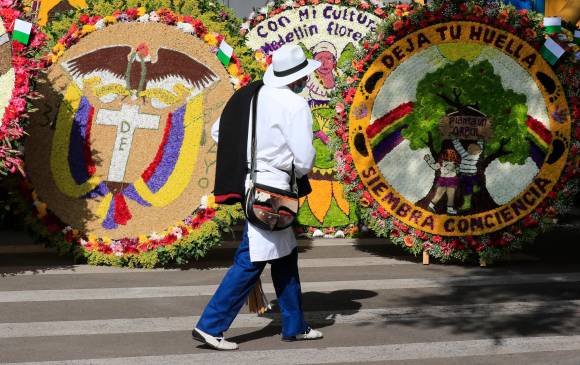
TLDR? The Feria de las Flores is one of the most notable events in Colombia and Latin America.
For weeks on end, the city of Medellin and its surrounding communities explode into a cataclysm of colors, sounds, and you guessed it, flowers. Many flock to Medellin during this time of year to catch a piece of the festivities.
However, the background of how the festival has come to seem to be less well known than the current fiestas that define it in the present moment. In this post, we’ll go into a little of the backstory surrounding Festival de Los Flores, a history that is sure to make your opinion of the event even grander.
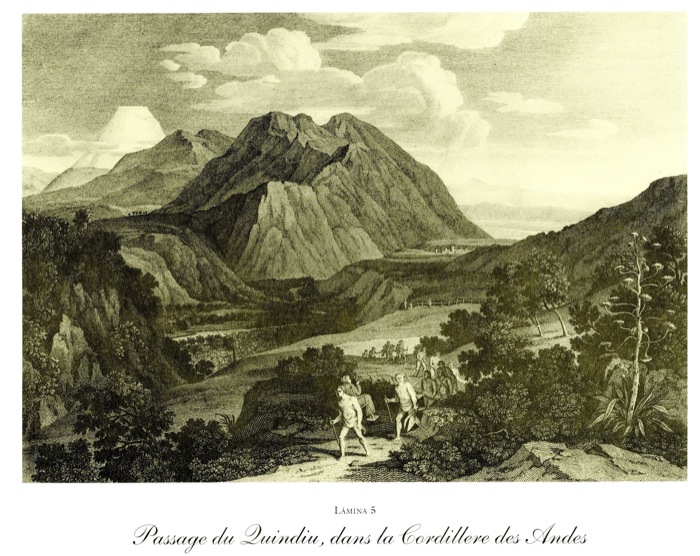
The origins of the Festival de Los Flores come from a somewhat dark chapter in Colombia’s and the world’s history. The flowers that participants wear on their backs are there to commemorate the end of slavery in Colombia.
The flowers are celebrated and symbolized being lighter than people, who the former slaves of the Americas would often have to carry. They would hoist their Spanish rulers on their backs, up steep hills and through treacherous territory.
The people who shepherded people and goods across the mountains were known as Silleteros. Silleteros were utilized as slaves by the Spanish to carry goods and people across mountain passes. They did this in places that were considered unwieldy for horses and donkeys.
Sometimes this would involve carrying hundreds of pounds over mountain passes at very high elevations. It was considered very rare for even healthy Silleteros to live beyond the age of 40.
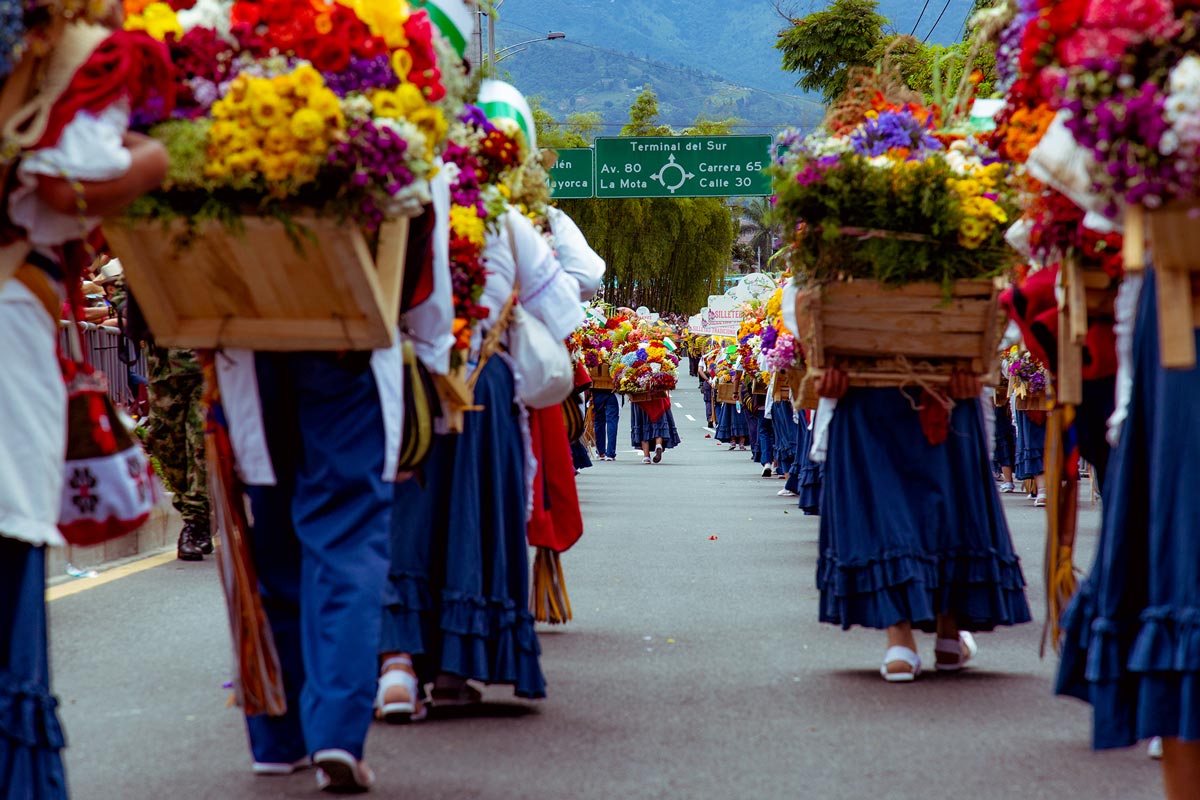
Silleteros still play an important role in the cultural identity of Antioquia. But nowadays, they only carry goods across mountains, and not other people.
The Silleteros nowadays symbolize the resiliency of the mountain peoples of Colombia. This sense of resiliency has spilled over into the Silleteros of the Feria de Las Flores tradition.
The modern Silleteros wear flower arrangements on their back to honor the work of their ancestors. This way of carrying flowers was also inscribed into tradition because many rural farm workers decided that it was the most efficient way to carry
Today, the Desfile de Silleteros is perhaps the central event of the festival. It includes hundreds of Silleteros carrying beautiful crafted floral arrangements on their backs. It creates an explosion of colorful fluorescence!
The synonymous nature of the Silleteros tradition with the Antioquian cultural identity has given rise to a saying,“Cuando pasan los silleteros, es Antioquia la que pasa.” In English, this translates to, “When the silleteros go by, it’s Antioquia going by.”
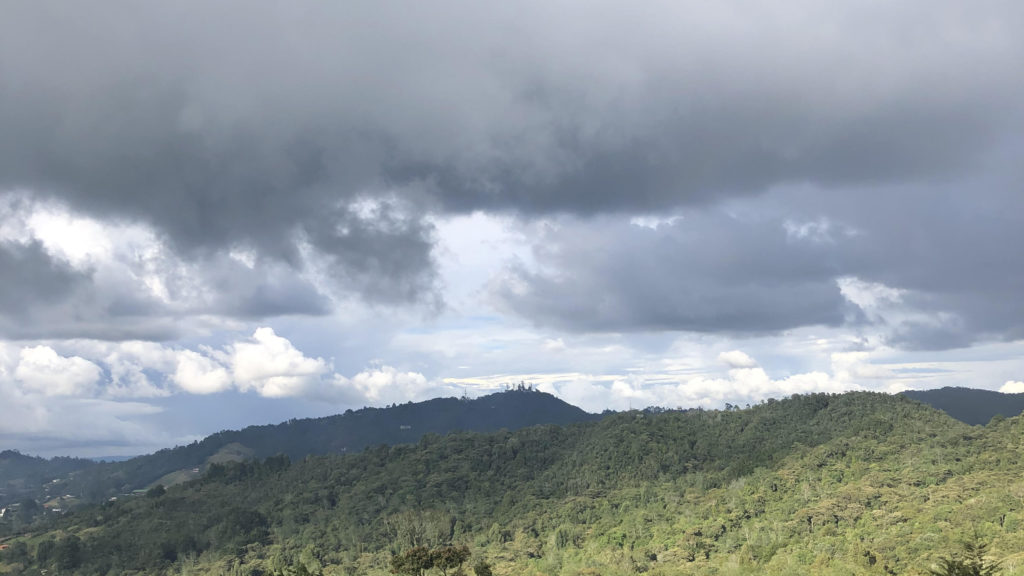
By some accounts, Colombia is one of the biggest exporters of flowers in the world, second only to the Netherlands and their famous tulips. This has been true for more than six decades. So in some ways, that aspect of the country has become a tradition in itself.
The original Feria de Las Flores occurred in a small town outside of Medellin, the beautiful mountain community of Santa Elena. Santa Elena is one of the local epicenters of flower growing for the region and in Colombia in general. After a while, the festival activities in Santa Elena had established themselves for long enough to become a tradition.
A member of Medellin’s tourist bureau by the name of Antonio Uribe suggested that they throw a festival to commemorate the very successful Colombian flower export industry. At that point, the very first Medellin Festival de Los Flores was born. By all accounts, it was a very modest event by today’s standards, attended by just a few hundred people in the city of Medellin.
It did, however, contain many of the iconic elements of today’s festivities. This includes the Silleteros carrying bundles of flowers, musical events, and exhibitions of some of the most notable flower species in the region. From these humble beginnings has now exploded into a major national and international event.
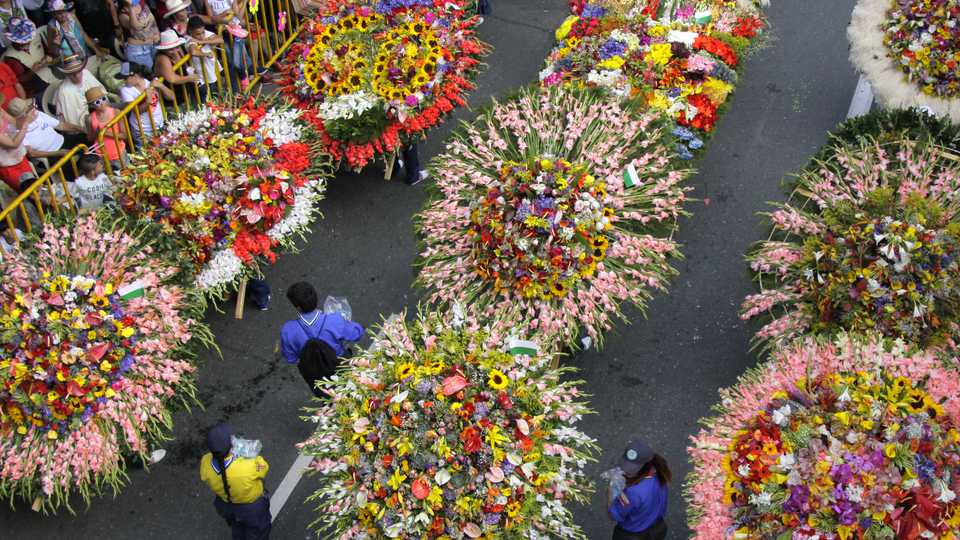
The modern Festival de Los Flores has gradually accumulated events over the decades. It’s transformed itself into a massive celebration that transpires over several weeks towards the end of summer.
The festival has many different types of events and festivities to engage in. Some of these include:
Of course, there’s always more to check out. The current program for the festival is over 100 pages long, so you can imagine that there’s a lot to check out!
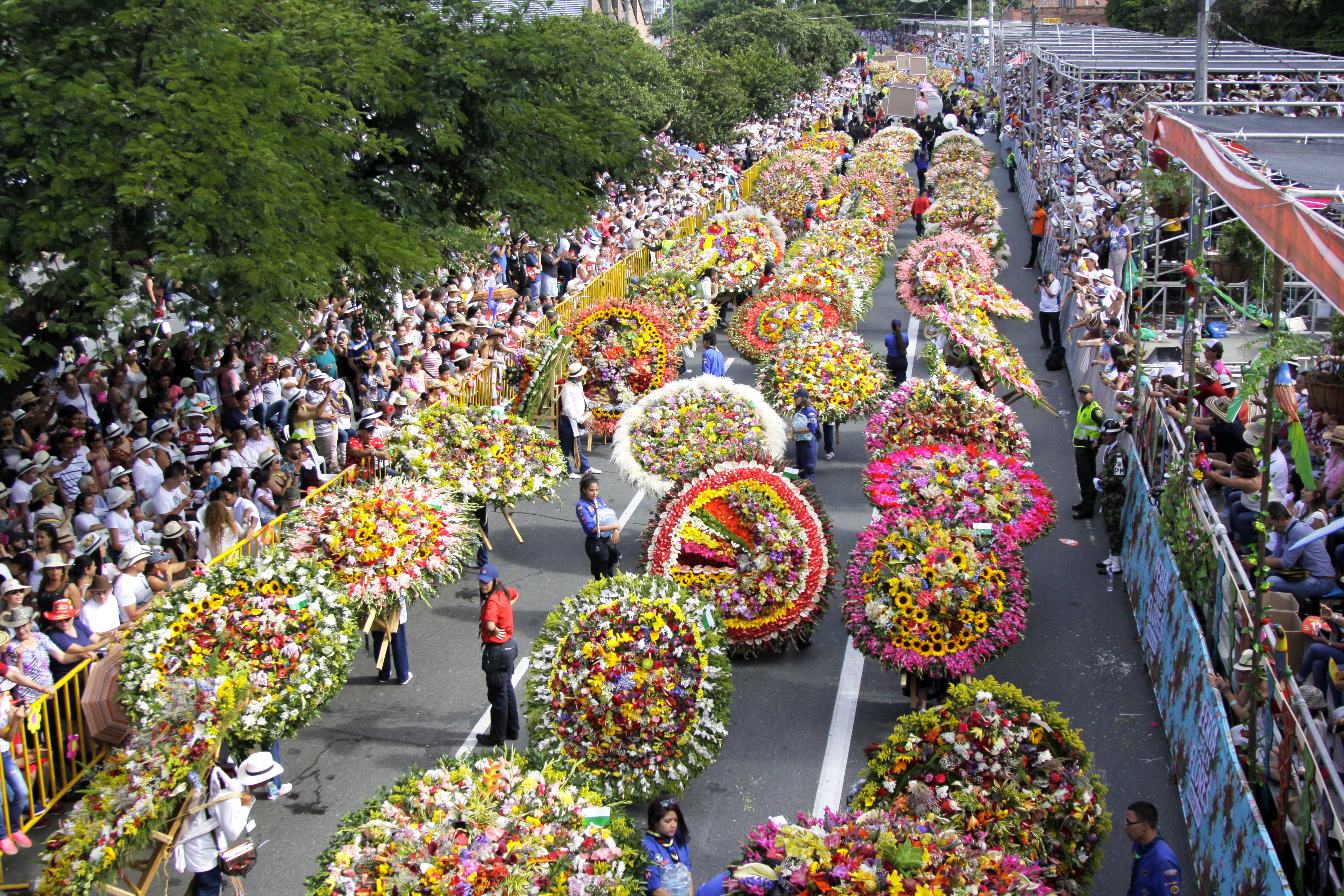
One thing that adds to the energy of the festivities is the presence of thousands of foreigners and visitors to the city. They arrive in the city to check out all the events that transpired over the weeks.
The explosion of color and scents that occur in the city is matched by the engaged enthusiasm of thousands of onlookers. They all come to witness this amazing once-a-year celebration.
It’s a bit like being in New Orleans for Mardi Gras, albeit with slightly less binge drinking. Although if that’s your thing, you could probably find several institutions willing to oblige you!
The history of Latin America isn’t always pretty, so it’s important to acknowledge its darker aspects. We can do this while trying to build a more positive future as we advance.
Nothing does this more colorfully and beautifully than Medellin’s Festival de Los Flores.
It takes some of the more complex elements of Colombia’s past and turns it into a one-of-a-kind celebration of colors, flowers, and life.
If you like this blog, you might like the Casacol Instagram page to keep up with all the new articles. Anything we need to update or correct? Care to contribute? Email us at blog@casacol.co.